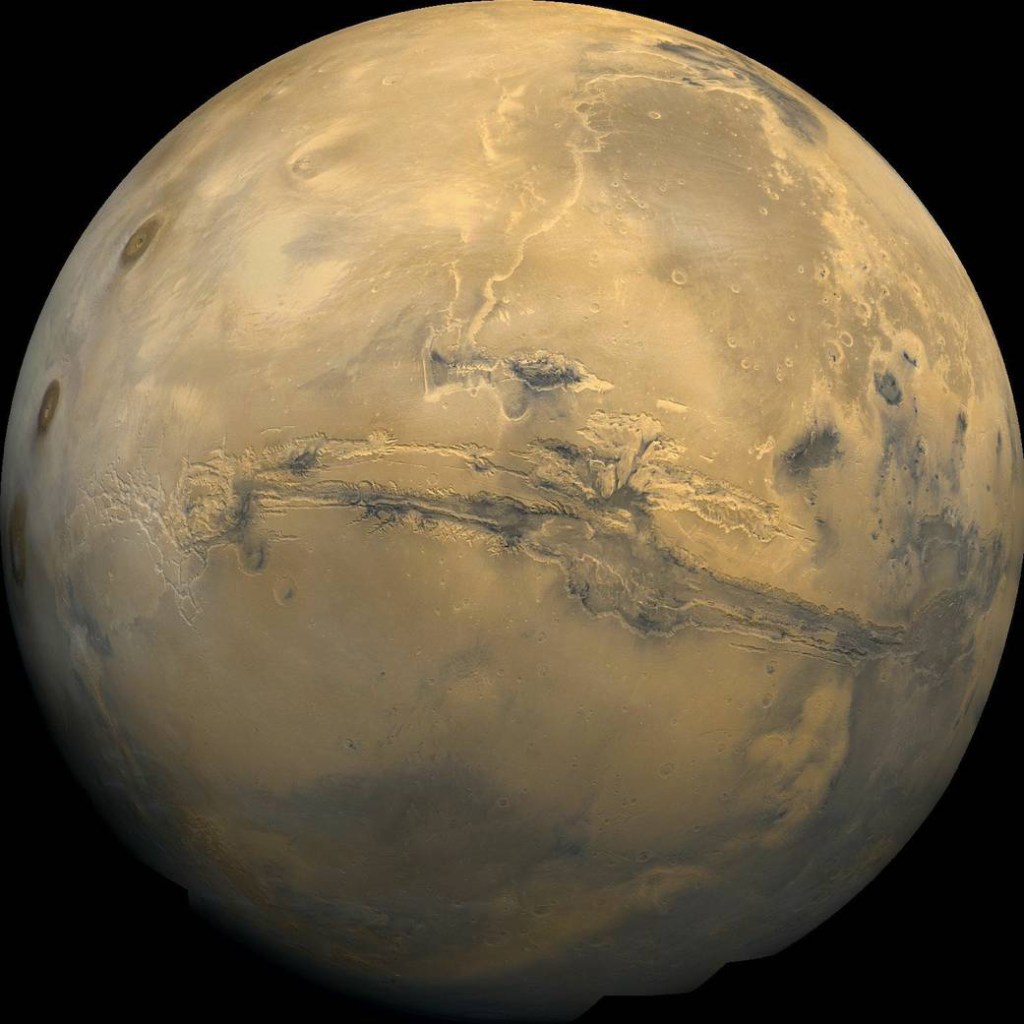The slope rises as high as London’s Big Ben tower.
Beneath its ruddy layer of dirt is a sheet of ice 300 feet thick that gives the landscape a blue-black hue.
If such a scene sounds otherworldly, it is.
To visit it, you’ll have to travel to Mars.
Planetary scientists located eight of these geological features, called scarps, on the Red Planet.
An analysis of the scarps revealed that thick ice hides just below the surface. This ice, the researchers say, could be a tempting target for future exploration – as well as a valuable resource for Earthlings camped out on Mars.
“We’ve found a new window into the ice for study, which we hope will be of interest to those interested in all aspects of ice on Mars and its history,” said Colin Dundas, a member of the U.S. Geological Survey’s Astrogeology Science Center in Arizona and an author of a report published Thursday in the journal Science.
It is not news that Mars is icy. In 2001, the Mars Odyssey spacecraft arrived at the planet and began snooping for chemical signatures of ice. The craft’s gamma-ray spectrometer found telltale hydrogen, which indicated Mars had enormous amounts of ice. As much as a third of the Martian surface contains shallow ice. But remotely sensing elements such as hydrogen could not reveal the depth and makeup of the ice.
The newer Mars Reconnaissance Orbiter mapped the surface in greater detail. Dundas and his colleagues used its pictures to locate exposed ice in small craters, glaciers and ice sheets. “The high-resolution data has greatly improved our understanding of various ice-related land forms,” he said.
Send questions/comments to the editors.



Comments are no longer available on this story